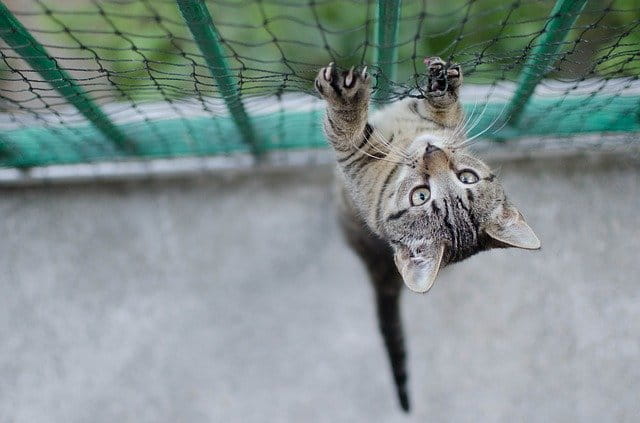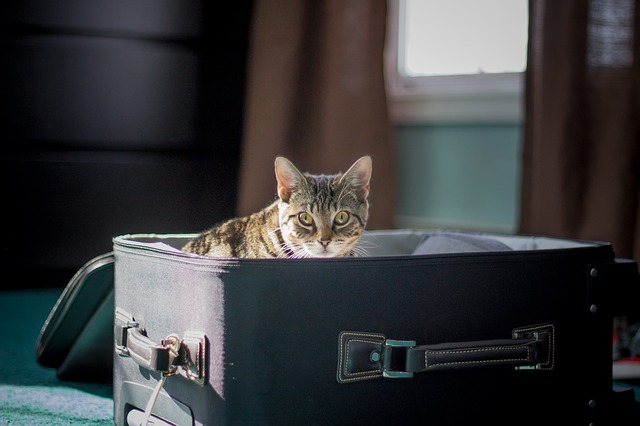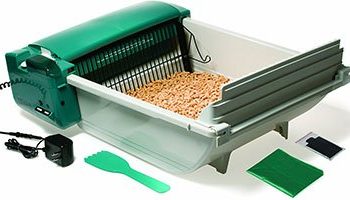If your cat loves the outdoors, you have good reason to be worried about its safety. For one, outdoor-loving cats are exposed to many more dangers than their strictly indoor counterparts. As expected, these dangers mean that they may have a much shorter lifespan than indoor cats. If your cat loves being outside, you cannot protect them from every threat, but there are certain things you can do to minimize the risks.
In this article, we’ll walk through steps you can take to protect your cat and make the outdoors a safer environment for them.
Tips to Keep Your Cat Safe and Sound Outdoors
Carry your cat
Instead of letting your cat roam free, you could go with it for a walk around your backyard, allowing him to sniff and explore all he wants. Make each expedition different from the previous and keep them brief (10 – 15 minutes); a time limit is necessary as most pets can become keen to jump down and explore on their own if you take too long.
For a timid pet with little or no outdoor experience, start with just a minute or two; this will not only keep him safe outside but accustom him to the “strange” world outdoors.
Leash-train your cat
Another effective way to keep your cat safe outdoors is by walking him on a leash. Like most dogs, we can walk some cats on a leash with the help of the right-sized harness. But you have to start early – while your cat is still a kitten. Beginning at the kitten stage will make the process easier for you and him, even though you can still try it with an adult cat.
Once a cat becomes used to a harness, attach a leash. You can let the leash freely drag behind the cat around the yard but be sure to stay around in case the leash gets caught. With time, tug the leash a little to guide the cat, and when he gets used to it, you can start taking him for walks outside.
Even with the leash, you still want to be careful and look out for dangers like dogs or stray cats when outdoors. Do not get too close to things like tree trunks that your cat can climb. You may be left with the end of a leash and your cat high in the tree.
Get a harness
One part of the harness goes around your pet’s neck, and the other goes right under his arms. Some others also have a part that goes along the chest wall and is attached by a secured piece.
With a harness, your cat is less likely to strangle itself than it would with a regular collar. Ensure you get only the right size for your cat and that they feel comfortable while wearing it.
Help your cat become familiar with the harness by associating it with good things like treats or toys. Fix it on your cat for a few minutes several times a day until your cat gets used to them and stops paying attention, then put it on when he goes outside.
Don’t declaw your cat
The outdoor-loving cat needs it for self-defense when he is out, and this is where their claws become super-useful. For days when your cat needs to escape from danger outside, it can use its claws to climb to safe areas like trees. That said, a declawed cat may not be a good candidate for outdoor activities unless he is wearing a harness with a leash and you’re right there with him.

Outdoor enclosures/fences
These can be built from scratch or assembled as modular enclosures. If your cat must roam freely around the yard without you there, you want to be sure it stays safe, and an outdoor enclosure considerably provides that safety. We have listed the best 5 cat fences and enclosures here.
Keep your cat healthy and up-to-date on shots.
This is very important; Before you let your cat outdoors, ensure that he has recently gotten a thorough physical exam and that his shots are up-to-date.
Some recommended vaccinations for outdoor exploring include:
Rabies
FeLV (feline leukemia virus)
Before the FLV vaccine, your vet will test for it and if he is healthy, vaccinate for it. The disease can be life-threatening for cats but especially so for cats that love the outdoors as they are more than likely to come in contact with stray/unknown cats.
Just a little preventive care will help you protect your cat and reduce the likelihood of disease spreading to you or your other pets.
An ID tag on the collar
If your cat wears collars and doesn’t return home, the ID tag with your number on it is an easy way for your neighbors and others to help track you.
Get Hi-tech devices
Go hi-tech with your cat! Besides a collar or harness, you can microchip your feline. The chips are tiny and can be implanted under your cat’s skin by your vet. When scanned, they provide your information, but you have to keep it up to date online for it to be entirely beneficial.
If you lose your cat and get picked up off the streets, vets in shelters will often check for a microchip to return your pet safely to you.
You can also invest in GPS tracking devices that allow you to monitor your feline’s movement whenever it goes outside. While it will not directly protect your cat from danger, you’ll know where he is and where he goes.
Final words
There are no 100% guaranteed methods to keep your cat safe outdoors; a combination of some methods above will help in no small way. If your cat must be outdoors unsupervised, know of the risks and take the proper precautions to keep him from harm.
Your cat remains your responsibility, and its longevity depends primarily on you. Please do your part by keeping it happy and safe when outdoors.
About the Author
Kirsten Heggarty
Kirsten created The Pet Handbook with the aim of sharing her knowledge about pets, pet food, healthy habits, and more. All of her advice is based on years of her own experience with her pets, and feedback that she has received from grateful readers about her tips. If you want to know more please read the About Me page.









